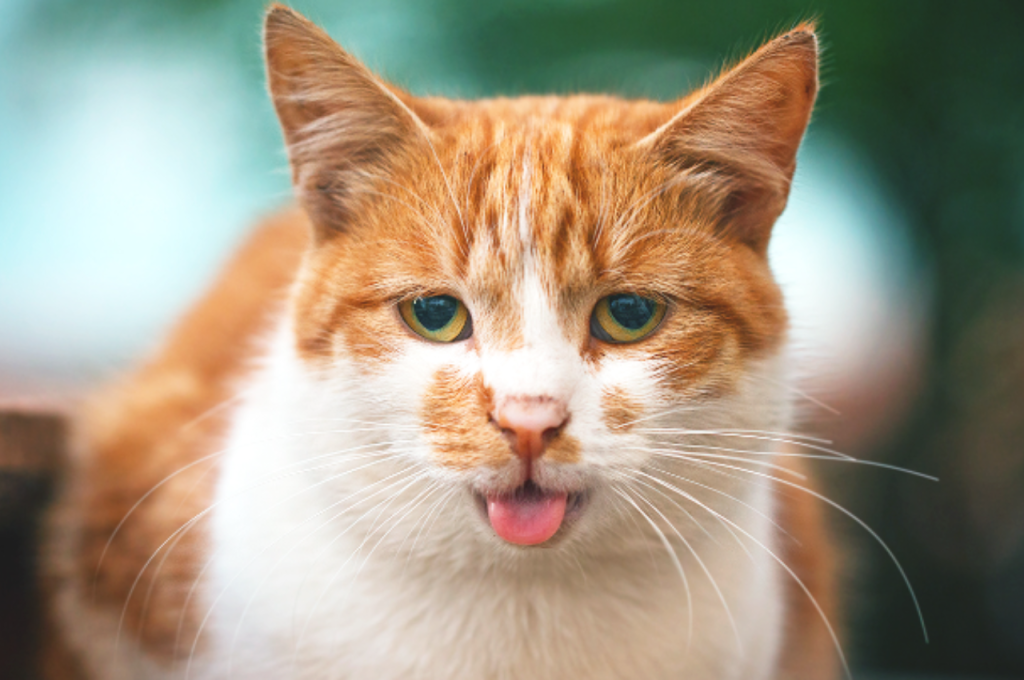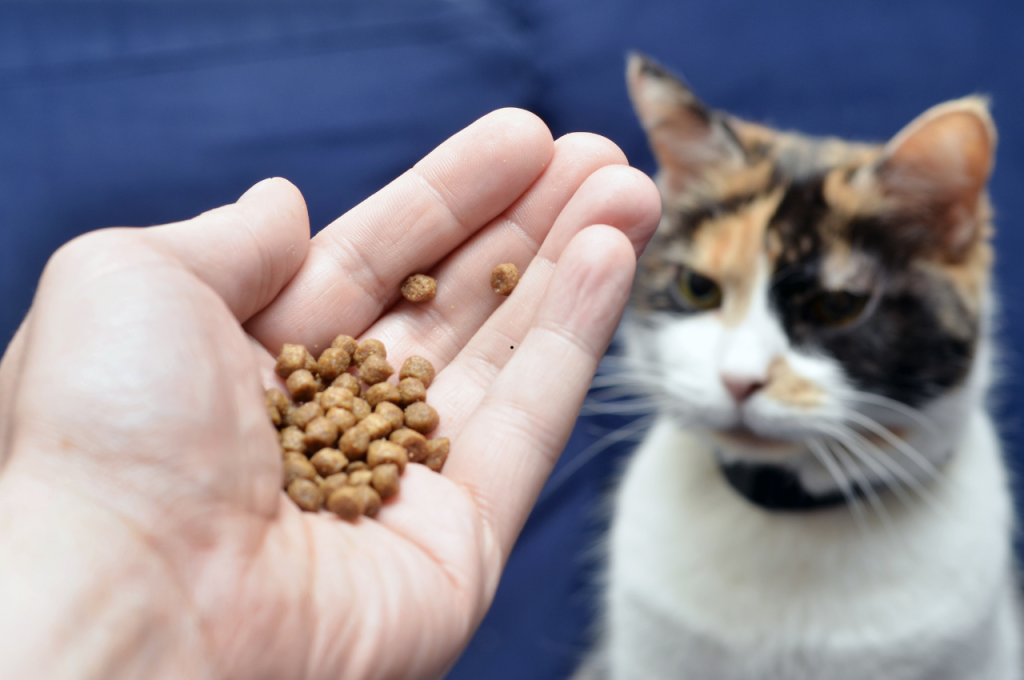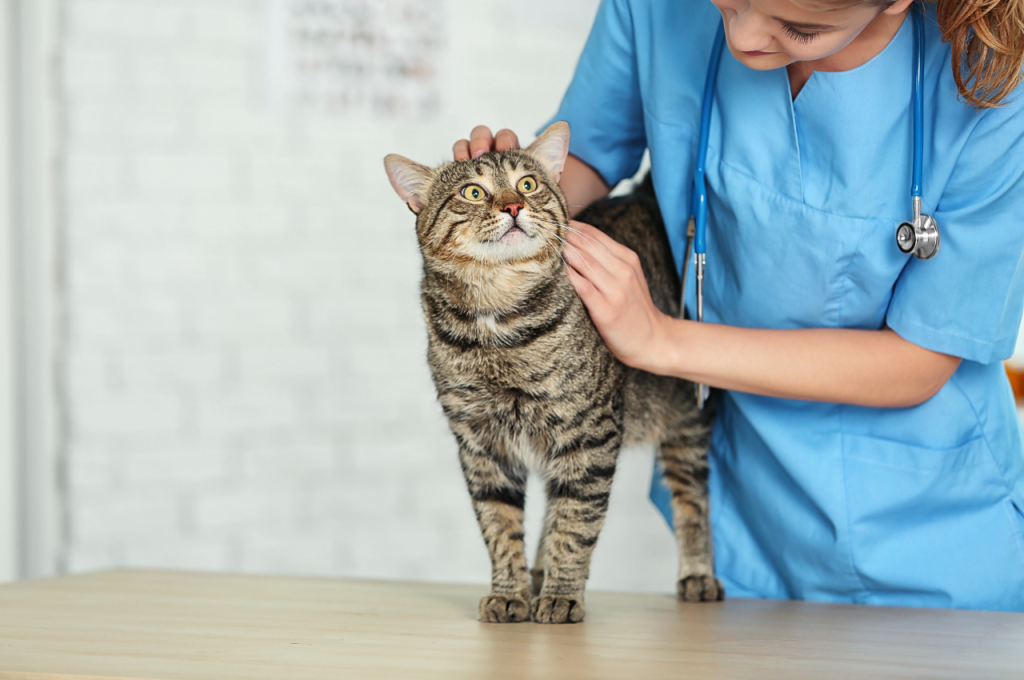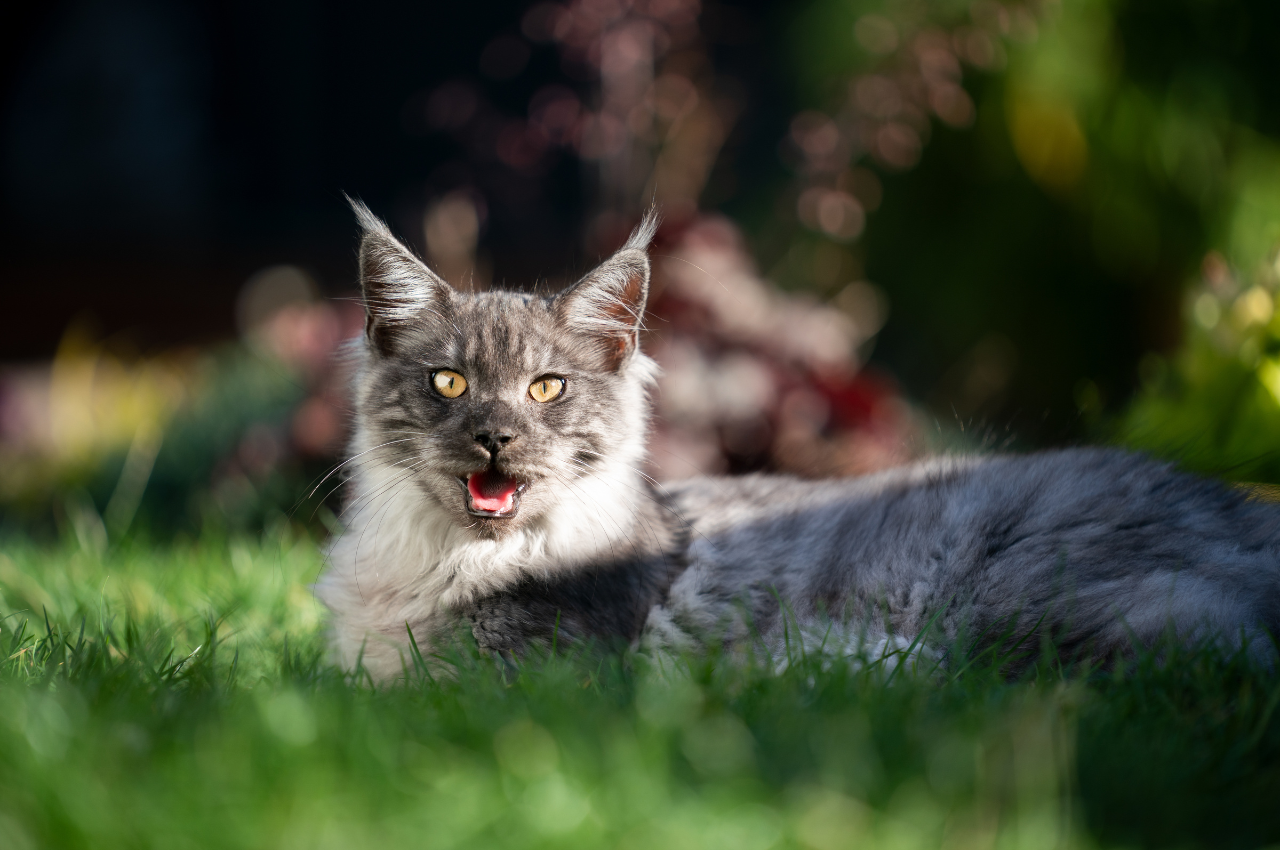To comfort a panting cat, provide a cool and calm environment with plenty of water. Now, let’s explore some effective ways to soothe your feline friends when they’re panting excessively.
Cats pant for various reasons, such as stress, anxiety, heat exhaustion, and respiratory problems. When your cat pants, it is essential to identify the underlying cause and take appropriate action. In some cases, panting can be a sign of a severe medical condition, so it’s always best to consult a veterinarian if you notice any unusual behavior in your cat. We’ll discuss some practical ways to comfort your panting cat and keep them healthy and happy. From creating a comfortable environment to using cooling techniques, we’ll cover all the tips and tricks you need to know to comfort your furry friend.
Recognizing Panting in Cats
Recognizing panting in cats can be a sign of stress, anxiety, or overheating. To comfort your cat, ensure they have access to cool water and a well-ventilated space. Avoid excessive handling and provide a calm and quiet environment.

Normal vs. Abnormal Panting
Panting in cats is not as common as in dogs. Normal panting in cats can occur after strenuous activity or in hot environments. Abnormal panting, however, may indicate an underlying health issue.
Causes of Excessive Panting
Excessive panting in cats can be caused by stress, anxiety, obesity, or respiratory problems. Identifying the root cause is crucial for providing appropriate care and comfort to your feline companion.
Immediate Comfort Measures
Immediate comfort measures can help calm a panting cat and ensure their well-being. These measures focus on creating a soothing environment and promoting proper hydration. By implementing these steps, you can provide immediate relief to your feline friend.
Creating a Calm Environment
A calm environment is crucial for comforting a panting cat. Keep the surroundings quiet and free from any potential stressors. Dim the lights and create a cozy spot where your cat can relax undisturbed. Provide a comfortable bed and ensure the area is warm but not too hot.
Ensuring Proper Hydration
Proper hydration is essential for a panting cat. Ensure fresh water is readily available in a clean bowl. Consider using a water fountain to entice your cat to drink more. Offer wet food to supplement their fluid intake. Monitor their water consumption closely to ensure they are adequately hydrated.
Temperature Control Strategies
To comfort a panting cat, implement temperature control strategies by providing a cool environment with ample water. Place a fan or air conditioner nearby to help regulate their body temperature effectively. Additionally, offer frozen treats or a cool surface for them to rest on.
Cooling Techniques
When it comes to comforting a panting cat and helping them regulate their body temperature, there are several cooling techniques you can employ. These strategies can provide relief for your furry friend and prevent overheating. By implementing these temperature control techniques, you can ensure your cat stays comfortable and healthy. One effective cooling technique is to provide your cat with a cool and comfortable environment. This can be achieved by keeping the temperature of your home moderate and ensuring good air circulation. You can also use fans or air conditioning to create a cool space for your cat to relax in.
Another cooling technique is to offer your cat access to cool surfaces. You can place a cooling pad or mat in their favorite resting spots, which can provide them with a refreshing place to lie down. Additionally, providing access to tiled or linoleum floors can help your cat cool down as these surfaces tend to be cooler than carpets or rugs.
Avoiding Overheating
To avoid overheating, it’s important to be mindful of your cat’s exposure to heat sources. Keep your cat away from direct sunlight, especially during the hottest parts of the day. If your cat enjoys spending time outdoors, provide them with shaded areas where they can retreat when they start to feel too warm. Proper hydration is also crucial in preventing overheating. Ensure that your cat always has access to fresh and cool water. Consider using a pet water fountain, as the flowing water can encourage your cat to drink more.
Furthermore, avoiding strenuous activities during the hottest times of the day can help prevent overheating. Schedule playtime or exercise sessions during the cooler parts of the day, such as early morning or evening, when the temperature is more bearable. By implementing these cooling techniques and avoiding overheating, you can help comfort your cat and ensure their well-being, especially during hot weather or in environments where the temperature is elevated. Taking these precautions will contribute to your cat’s overall comfort and happiness.
The Role of Nutrition and Hydration
Caring for your cat’s well-being involves paying attention to their nutrition and hydration. Just like humans, cats need a balanced diet and access to clean water to stay healthy and comfortable. When it comes to comforting a panting cat, making dietary adjustments and ensuring they have enough water can play a crucial role in their overall well-being.

Dietary Adjustments
Proper nutrition is essential for a cat’s overall health. When your cat is panting, it may be a sign of discomfort or underlying health issues. Making dietary adjustments can help alleviate their panting. Consider the following:
- High-quality cat food: Ensure you are feeding your cat a balanced diet that meets their nutritional needs. Look for cat food that is high in protein and low in carbohydrates. Avoid feeding them excessive amounts of treats or human food, as it can lead to weight gain and other health problems.
- Specialized diets: Depending on your cat’s specific needs, your veterinarian may recommend a specialized diet. For example, if your cat has certain allergies or sensitivities, they may benefit from a hypoallergenic or limited-ingredient diet.
- Weight management: If your cat is overweight, it can put additional strain on their respiratory system and lead to panting. Consult with your veterinarian to determine the appropriate portion sizes and feeding schedule to help your cat maintain a healthy weight.
Importance of Water Access
Hydration is crucial for a cat’s overall health and can help alleviate panting. Cats have a low thirst drive, so it’s essential to ensure they have easy access to fresh water throughout the day. Consider the following:
- Multiple water sources: Place water bowls in different areas of your home to encourage your cat to drink more. Some cats prefer running water, so you may consider investing in a cat water fountain.
- Clean and fresh water: Cats are sensitive to the taste and smell of water. Make sure to change the water daily and clean the water bowls regularly to ensure they have access to clean and fresh water at all times.
- Wet food: Incorporating wet cat food into your cat’s diet can contribute to their overall hydration. Wet food has a higher moisture content compared to dry kibble, helping to keep your cat hydrated.
Stress Reduction Techniques
Help your cat reduce stress and panting by using comfort techniques. Try providing a calm environment, using soothing music, offering treats or toys, and giving gentle massages to help your furry friend relax.
Safe Spaces and Hiding Spots
Stress Reduction Techniques are crucial for comforting a panting cat. Engaging in Interactive Play helps distract them from stress. Providing Safe Spaces and Hiding Spots allows cats to retreat when feeling overwhelmed. Creating a calming environment is key.
Interactive Play:
- Use toys to engage your cat.
- Rotate toys to keep them interested.
- Spend quality time bonding with your cat.
- Designate quiet areas for your cat.
- Provide cozy hiding spots like cat trees.
Respect their need for space. Implementing these techniques can significantly reduce your cat’s stress levels.
Monitoring and Observation
Comforting a panting cat requires careful monitoring and observation. By keeping an eye on their behavior and environment, you can identify any potential causes of distress and take appropriate measures to provide comfort and alleviate their panting.
When you notice your cat panting, it can be a sign of distress or heat exhaustion. As a responsible pet owner, it is important to monitor and observe your cat’s behavior closely. Keep an eye out for other signs of discomfort such as lethargy, loss of appetite, or vomiting. Make sure your cat has access to cool water and a cool environment to prevent overheating.
Signs of Improvement
If your cat’s panting decreases and they begin to act more like their usual self, it may be a sign of improvement. Keep monitoring your cat’s behavior and make sure they continue to have access to cool water and a cool environment. Offer your cat some of their favorite treats or toys to see if they show interest in them.
When to Seek Veterinary Care
If your cat’s panting persists or worsens, it may be time to seek veterinary care. Bring your cat to the vet if they are panting excessively, have difficulty breathing, or if their gums or tongue appear blue or purple. These symptoms can indicate a more serious underlying condition that requires medical attention.
In conclusion, monitoring and observation are key when it comes to comforting your cat’s panting. Keep an eye out for signs of improvement, but don’t hesitate to seek veterinary care if your cat’s condition worsens. Remember to always prioritize your cat’s health and well-being.
Veterinary Interventions
Veterinary interventions play a crucial role in addressing panting in cats. Through diagnostic tests, veterinarians can accurately identify the underlying cause of your cat’s panting. Once diagnosed, appropriate treatment options can be recommended to provide relief and improve your feline companion’s well-being.
Diagnostic Tests
Diagnostic tests such as blood work, X-rays, and electrocardiograms can help veterinarians pinpoint the cause of your cat’s panting. Blood work can reveal abnormalities in organ function, while X-rays can detect respiratory issues or abnormalities in the heart and lungs. Electrocardiograms are used to assess the heart’s electrical activity, aiding in the diagnosis of cardiac conditions.
Treatment Options
Once the underlying cause of your cat’s panting has been determined, treatment options can be tailored to address the specific condition. For example, if heart disease is the culprit, medications to manage the condition and improve heart function may be prescribed. Respiratory issues may be treated with medications to reduce inflammation and improve breathing. In some cases, surgical intervention may be necessary to address certain conditions contributing to panting.
Long-term Management and Prevention
Ensuring the long-term well-being of your panting cat involves proactive measures to manage and prevent potential issues. By taking the following steps, you can help create a comfortable and stress-free environment for your feline friend.
Regular Check-ups
Regular veterinary check-ups are essential to monitor your cat’s overall health and identify any potential concerns early on. Scheduling annual physical examinations and discussing any unusual behaviors, including panting, with your veterinarian can contribute to effective long-term management.

Creating a Stress-free Home Environment
Establishing a calm and stress-free home environment is crucial for the well-being of your cat. This can include providing quiet spaces, interactive toys, and sufficient mental and physical stimulation. In addition, maintaining a consistent feeding and playtime schedule can help reduce stress and anxiety, contributing to the long-term comfort of your pet.
Conclusion
In caring for your panting cat, remember to stay calm and provide a quiet, cool environment. Keep them hydrated and seek veterinary help if panting persists. Understanding their needs will help you comfort and support your feline friend effectively.
